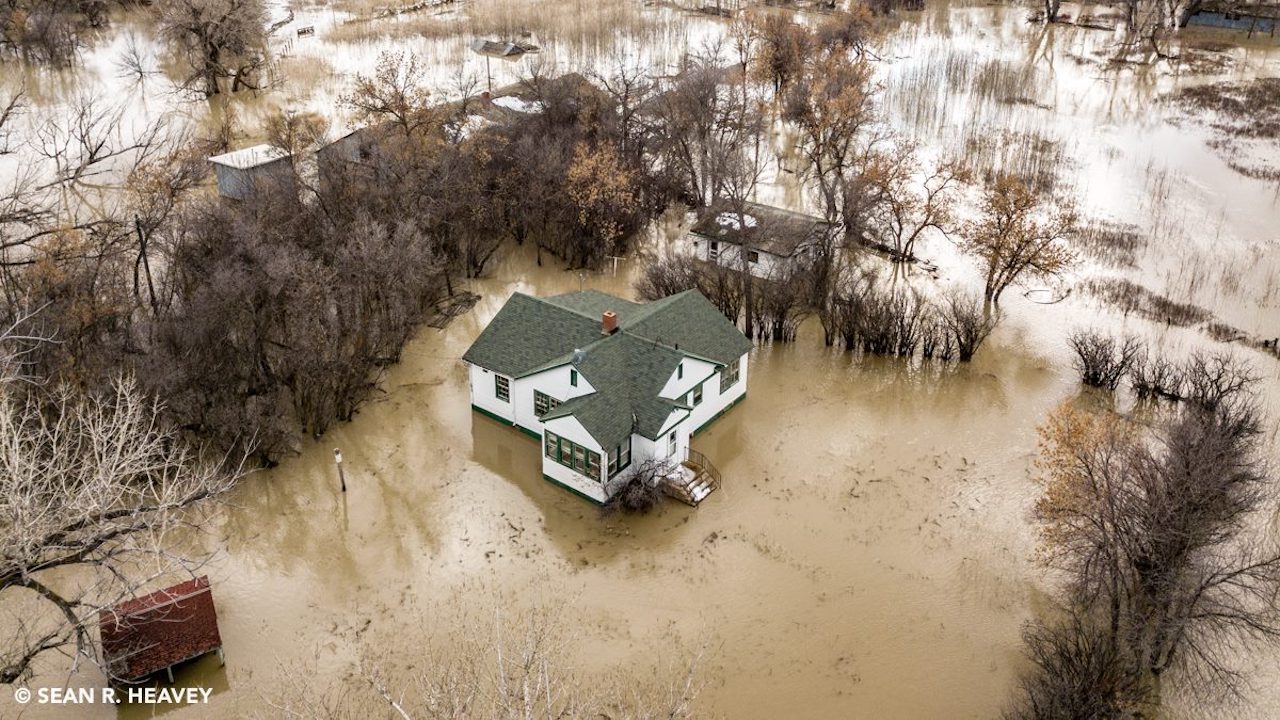2019 Spring Update

Glasgow, MT, March 30, 2019. Rapid snowmelt and spring storms are causing flooding of the Milk River in eastern Montana. Photo: © Sean R. Heavey
Welcome to the April 2019 Montana Drought & Climate newsletter. We hope that Montana farmers and ranchers find the information here useful. Please send us your feedback!
Here’s what you’ll find in this newsletter:
Early Spring 2019 Update — Understanding current and past conditions aids in predicting future conditions. This section provides an overview of how this spring is progressing.
Late Spring 2019 Forecast — The seasonal forecast discusses predictions for temperature, precipitation, and drought, as well as the global air circulation patterns that impact growing conditions and water availability in Montana.
Reference — A helpful glossary of terms found in this newsletter.
In Brief
- Historically cold temperatures during February and early March have warmed as we moved into spring.
- Statewide snowpack was near normal at the end of February, but has decreased in northwestern Montana while increasing in the south-central part of the state.
- Soil moisture is high across Montana, as is typical in early spring. The timing and temperature of spring storms will in large part determine the speed and intensity of snowmelt.
- The NOAA seasonal forecast for April–June is for warmer than normal conditions in western Montana and cooler than normal conditions in eastern Montana. Conditions in southern Montana are somewhat likely to be wetter than normal during late spring and early summer.
About Montana Drought & Climate
and the Montana Climate Office
Montana Drought & Climate is a USDA-funded project of the Montana Climate Office (MCO) at the W.A. Franke College of Forestry & Conservation at the University of Montana, in collaboration with the Montana State University Extension Service. The MCO is an independent state-designated body that provides Montanans with high-quality, timely, relevant, and scientifically-based climate information and services. We strive to be a credible and expert source of information for decision makers that rely on the most current information on climate to make important decisions. It is also the role of the MCO to assist stakeholders in interpreting climate information or adapting climate products to their needs.
Production of this newsletter is supported by Water for Agriculture Challenge Area grant no. 2017-67027-26313 from the USDA National Institute of Food and Agriculture and by the Montana Water Center. Any opinions, findings, conclusions, or recommendations expressed in this publication are those of the author(s) and do not necessarily reflect the view of the U.S. Department of Agriculture, the Montana Water Center, or the University of Montana. Please refer to the Montana Climate Office user agreement and disclaimer at climate.umt.edu/disclaimer.

Montana Climate Office
Montana Forest & Conservation Experiment Station
University of Montana
32 Campus Drive
Missoula, MT 59812
P: (406) 243-6793
E: mtdrought@umontana.edu
W: https://climate.umt.edu/